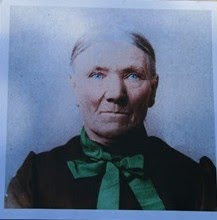 |
| Christopher Lister Riding |
Christoper Lister Riding
Birth: Feb. 10, 1816, England
Death: Nov. 28, 1887, Saint George, Washington County, Utah, USA
 |
| Mary Ann Hale |
Married Mary Ann Hale, 5 Jan 1840, Burnley, Lancashire, England.
Children: Joseph E. Riding, Edwin Taylor Hale Riding, Thirza Hale Riding, Ellen Lister Hale Riding, Willard Riding, Thomas Edward Hale Riding, Alfred Hale Riding, Lister Hale Riding, Henry Hale Riding, Mary Eleanor Riding.
 |
| Eliza Adelaide Dolbell |
Married Eliza Adelaide Dolbell, 27 Feb 1857, Salt Lake City, Salt Lake, Utah.
Children: Moroni Alma Riding, Julia Adelaide Riding, Josephus Riding, George Kerry Riding, Heber Christopher Riding, Thrisia Riding, Abigail Riding, John Henry Riding, Franklin Dolbel Riding, Phillip Dolbell Riding, Clara Jane Riding, Ruth Riding, Christiana Dolbell Riding, Elizabeth Ann Riding.
Christopher Lister Riding was born on February 10, 1816, the son of Thomas Riding and Eleanor Lister.
The Riding's were of the sturdy middle class, Christopher's father being a baker by trade and owning his own shop. At an early age Christopher was apprenticed to a tinsmith to learn the trade. He was very apt at this work and was made a master mechanic before he was twenty-one years of age.
He married Mary Ann Hale, a girl born and raised in his own home town. The young couple heard the Gospel and were baptized February 14, 1840.
By 1847 the family had collected enough to come to the United States. They came as far as St. Louis, Missouri, where their lack of finance compelled them to stop. During this time Christopher worked at his trade. By the end of five years he had collected money enough to purchase a wagon, a yoke of oxen, two cows, and supplies enough to last his family in the journey across the plains.
When they arrived in Salt Lake City they were housed first in the little one-roomed log house which is was once in preservation on the Temple grounds. In this house, their fifth child, Taylor, was born. Soon Brother Riding bought a lot on the block where the Walker Bank stood. He erected a two-roomed adobe house. He found work plentiful in Salt Lake.
Christopher met and married his second wife, Miss Eliza Adelaide Dolbell, a French girl who had come to Utah with her mother. At the time of the move, Brother Riding took his families to Provo. Here he was called to the Dixie Mission, settling in Santa Clara in 1860. He lived there two years when all that he had was washed away by the "Big Flood." However, he had received a call to come to St. George, previous to this. He built a dug-out 12x15, thatched with a willow roof. This with one tent and a willow shed sheltered his two families. He was soon able to build a one-roomed adobe house and later a shop.
There was not enough business in St. George to provide him work, so he secured a little four-wheeled cart and an ox. He loaded his cart with tinware and tools and visited all the northern settlements as far north as Beaver, selling his wares and accepting flour, butter, potatoes, cheese, etc. Later he secured a horse for his cart, and continued his trips until he became a well-known figure throughout the southern part of the state.
He made his wares from waste cans, as it was difficult and expensive to ship in sheet tin. People saved empty cans and old metal ware of all kinds for him. His store of wares consisted of buckets, milk pans, tin cups and plates, bread cans, lamps, canteens, coffee pots, washboards, etc.
He was a master workman in every sense of the word. Some of his buckets and pans are still in use. The ball on the Temple and the one on the Tabernacle are his work, as is the metal work on all the public buildings of town erected before his death. He died after a brief illness of only six days.
Children:
Henry Hale Riding (1845 - 1900)
Alfred Hale Riding (1848 - 1921)
Edwin Taylor Hale Riding (1853 - 1911)
Thomas Edward Hale Riding (1856 - 1898)
Christiana Dolbell Riding Allphin (1857 - 1925)
Heber Christopher Riding (1859 - 1928)
Clara Jane Riding Higgins (1860 - 1943)
Philip Dolbell Riding (1862 - 1863)
Elizabeth Ann Riding Liston (1863 - 1945)
Julia Adelaide Riding (1867 - 1869)
Thrisia Riding (1869 - 1869)
John Henry Riding (1870 - 1948)
Franklin Dolbel Riding (1874 - 1952)
Josephus Riding (1876 - 1945)
Ruth Riding Bagshaw (1877 - 1930)
Moroni Alma Riding (1879 - 1880)
Spouses:
Mary Ann Hale Riding (1816 - 1875)
Eliza Adelaide Dolbell Riding (1834 - 1908)
Burial:
Saint George City Cemetery
Saint George, Washington County, Utah, USA
Plot: A_H_164_6
____________________________________
Source:
Find A Grave http://www.findagrave.com/cgi-bin/fg.cgi?page=gr&GRid=78173


































